Sandwiches, scones, cakes, and tea – afternoon tea is jam-packed full of delicious elements to enjoy. What’s more, it offers a chance for pastry chefs and bakers to get creative, adding a decorative flourish or on-trend flavour to entice customers.
So, what trends are playing out on the afternoon tea market in 2024? Which items and flavours do consumers expect to see on the stand? And, with Afternoon Tea Week (12-18 August 2024) in full swing, how are operators evolving to ensure they serve a top-notch experience? Find out below.
Divergence in the market
There is divergence in the afternoon tea market. While some consumers want traditional finger sandwiches and scones, others want to be wowed with dry ice spectacles, colour changing drinks, and TikTok-worth patisserie displays linked to their favourite TV shows.
“While afternoon tea continues to thrive as a well-loved social eating occasion, there is a distinct differentiation growing between traditional afternoon tea and the visually stunning alternatives to well-loved favourites whose emergence has been heavily influenced by social media,” notes Jacqui Passmore, Marketing Lead West EU & AMEAP at Dawn Foods.
“People want to marvel at the beauty of the offering and also want to experience something different”
The core elements of these – sandwiches and scones – remain similar but there has been “real development in flavours and formats” of sweet treats, Passmore adds.
Themed afternoon teas are big news and creating quite a buzz on social media, particularly if they are well timed with the release of a new film or TV series.
“High-end themed afternoon teas push the barriers to a fine dining level, with beautifully presented miniature dishes and attention to detail. These offerings are visually stunning and perfect for shareable content on social media which only drives the trend even further,” Passmore notes.
There’s no limit to the creativity or subject matter, and the many elements involved offer establishments the perfect opportunity to stand out in an increasingly crowded market.
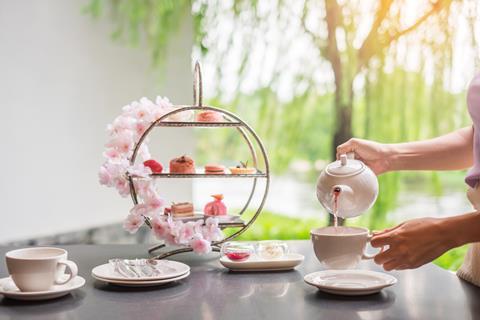
“Presentation is a huge factor in the enjoyment of afternoon tea,” says Matthew Grenter, sales manager at Brioche Pasquier. “People want to marvel at the beauty of the offering and also want to experience something different.”
This could include “unusual and theatrical presentation stands” or adding dry ice, serving items under a cloche or pairing cocktails and mocktails for a more immersive experience.
“With the experiential dining trend expected to grow, consumers aged between 18-34 and groups in particular, will continue to look for more innovative experiences that justify spend,” believes Kluman & Balter managing director Lawrence Watson. “From the summer of sport to popular television series, bakeries have been creative in ways to attract consumers to their doors – and drive conversation on social media – from Wimbledon to Bridgerton.”
The latter was a theme embraced by The Lanesborough in London, which rolled out a new menu to celebrate Season Three of the iconic Netflix series. The accompanying cocktails – Friends to Lovers and The Blooming Wallflower – were named to reflect key characters and moments, as were the pastries which included The Social Butterfly, Colin’s Travels, and The Book of Eloise.
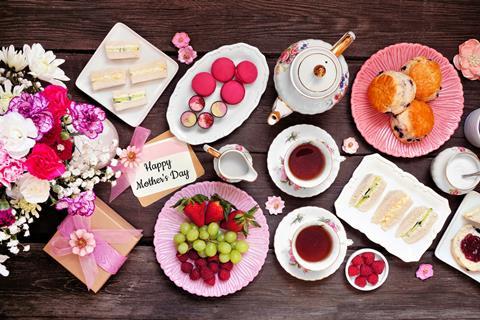
’Tis the season
While the latest season of Bridgerton provides an opportunity to crack out the fine china for certain audiences, there are more universal occasions which afternoon tea can be made suitable for.
“The beauty of offering afternoon tea is the ability to change it up on a regular basis and adapt your offering to suit in-season produce and key calendar dates, such as Valentine’s Day, Halloween, or Christmas,” says Samantha Rain, head of innovation & training at ingredients supplier Henley Bridge. This doesn’t require an overhaul every quarter either as Rain suggests adding “themed chocolate décor pieces, such as hearts, ghosts, snowflakes or Santas” to sweet bakes like cupcakes and tarts as an easy and cost-effective way to achieve this.
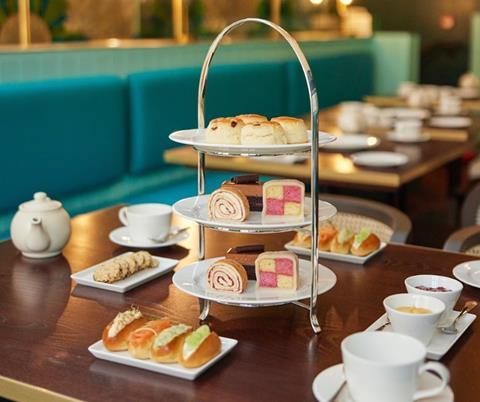
Others prefer to embrace seasonal ingredients and new formats. Bread Ahead is among them having first ventured into the afternoon tea market with the opening of its Tea House in Chelsea last year.
“We very much base our menu around seasonality, and what’s readily available to us and at their best,” explains Bread Ahead bakery director Reece Collier. The London-based bakery looks to connect its doughnuts to its Tea House menu with seasonal flavours shared across different types of baked goods.
Peach was the flavour in favour in July with a Peach Melba doughnut added to the main estate, while the Tea House hosted a poached peach, almond, lemon thyme & raspberry tart.
Adapting your offering to a season has been prominent in bakery for a long time, with Christmas range releases often being a highlight. But as consumers want excitement year-round many operators are changing things up more frequently than just at Christmas, summer, and Halloween.
“Operators should look to seasonal twists to add extra interest to their offerings, whether that’s swapping out scones for Hot Cross Buns, soaking sponges or fruitcakes in Pimm’s, decorating petit fours with seasonal chocolate, or topping tarts and cakes with fresh British raspberries,” suggests Sue Gwilliam, innovation development manager – Foodservice, at The Compleat Food Group.
“In autumn, operators can use warm orange and rich green hues associated with the season to enhance their tea services and decorations, as well as providing cakes with more savoury flavours such as carrot, squash and pumpkin,” Gwilliam adds.
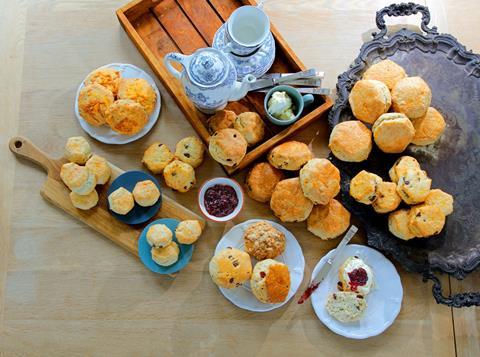
The great scone debate
Scones are a stalwart of the afternoon tea scene breathing life into the never-ending debates about whether jam or cream go on first and whether it should be pronounced scone (as in gone) or scone (as in stone). But while the debates rage, the scones stay the same with some of the most innovative afternoon tea offerings on the market still opting for plain or raisin scones.
Naturally, there is some debate around whether or not this is the right tactic.
“Scones have long been a symbol of Great British sweet bakery tradition but as most categories are evolving, the classic cream tea delicacy is lagging”
“I think there are certain elements of an afternoon tea that should remain traditional. Why try and fix something that isn’t broken right?” exclaims Bread Ahead bakery director Reece Collier. “We can enhance them at some points of the year, such as our spiced orange scones for our festive menu, but otherwise we leave traditional alone.”
Others disagree. “Scones have long been a symbol of Great British sweet bakery tradition. But as most categories are evolving and reinventing themselves, it looks like the classic cream tea delicacy is lagging,” believes Anthony Saison, head of category insights & customer marketing at Mademoiselle Desserts.
As such, the Maidenhead-based desserts manufacturer has sought to reinvent the humble scone, serving up inspiration for afternoon tea providers with a trio of ideas. What are the benefits of this? Diversifying the flavour profile of scones, Saison notes, helps make scones less reliant on cream and jam and opens up the category to other dayparts, particularly growing occasions such as brunch.
An apple crumble scone with apple and a hint of cinnamon, topped with a crunchy cinnamon crumble could pique consumer interests. A cherry Bakewell scone – an almond flavour scone with glace cherries – or chocolate chip variety would also offer a “unique and memorable” experience.
There is an in between option: innovating with the toppings but keeping the base traditional.
“Blueberry, rose, and lemon will continue to be popular, so try swapping out your classic jam flavours for something with a twist. Lemon curd would be a great pairing with classic scones,” suggests Kluman & Balter managing director Lawrence Watson.
Maple from Canada says ramping up the indulgence with maple caramel on top would meet consumer needs for something different. Smaller portions could also allow “customers to enjoy a range of new tastes and textures” adds Olivier Briault, development chef for the supplier.
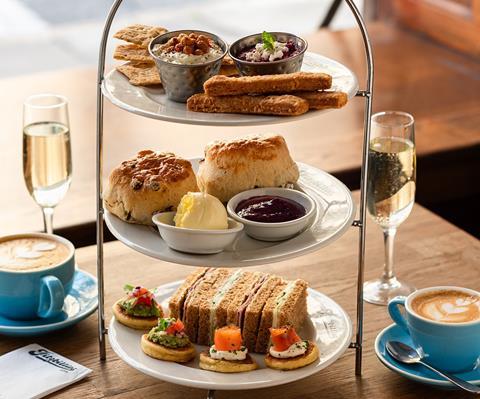
Savour the moment
Sweet items tend to steal the spotlight when it comes to afternoon tea – after all, patisserie lends itself to beautiful colours and intricate designs for maximum appeal. Sandwiches tend to be a bit beige, not helped by the pale colours of traditional fillings such as cucumber and cream cheese.
But no more. Increasing attention is being paid to the savoury elements which offer the opportunity for chefs to explore new cuisines, embrace earthy or hot spices, and refine classic homegrown fare.
“Savoury bakes are now important in an afternoon tea offering but with an indulgent and dainty twist – think mini brioche filled with lobster or finger eclairs with miso cream for example. Even the trend for a more rustic tea means pastry chefs are introducing a slither of sausage roll made with premium filling in a mouthwatering case,” adds pastry chef Olivier Briault.
Mixing up the savoury elements is perhaps more critical on themed or fusion afternoon tea menus where cucumber sandwiches would feel out of place. Inamo restaurant in London’s Soho, for example, offers up dragon rolls, prawn tempura, and plum chicken karaage as part of its sushi and Asian tapas afternoon tea.
The Gentleman Afternoon Tea at Mamucium Restaurant inside Hotel Indigo Manchester has drawn inspiration from British fare but swapped out sandwiches for miniature versions of fish & chips, pork pies, Scotch eggs, and toad in the hole.
Cambridge-based Fitzbillies, meanwhile, has gone all in on savoury elements adding an entirely savoury afternoon tea to its line-up this year by subbing out cakes for cheese straws, dips, and other items (more details in box out below).
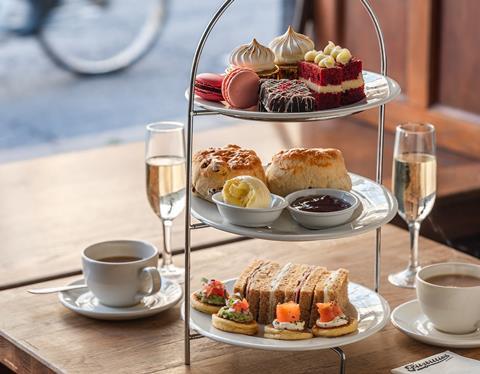
Afternoon tea in focus: Fitzbillies
Cambridge-based Fitzbillies has been on the bakery scene for more than a century. So, how does a business steeped in heritage evolve its afternoon tea menu to meet consumer needs?
“As Fitzbillies has been going for 104 years, our focus is always on finding a balance between continuity and change, classics with a twist,” explains Jenny Pace, ecommerce & marketing manager at Fitzbillies.
The afternoon tea offering is designed to showcase miniature versions of Fitzbillies’ most popular cakes, with red velvet recently being added to the line-up in recognition of it “fast outstripping chocolate and lemon as our most popular cake flavour”. A lemon meringue cupcake, red velvet slice, mini brownie, and macaron now make up the sweet portion of its Traditional Afternoon Tea, which is priced at £28 per person. Vegetarian, low gluten, and vegan menus are also available.
Another recent development saw two of the four finger sandwiches being replaced with blinis – one topped with smoked salmon & cream cheese and one with a purée of garden pea & edamame.
And, in response to customer demand, Fitzbillies has added a savoury afternoon tea for the first time. “We’ve replaced the selection of miniature cakes with a selection of savouries including our much-loved mature cheddar cheese straws and beetroot humous and whipped feta dips served with seeded sourdough crackers from our bakery,” Pace says.
For those not in the vicinity of Cambridge, the firm also sells afternoon tea hampers for nationwide delivery via its website. Notably, Fitzbillies was recently shortlisted for Online Bakery Business of the Year at the Baking Industry Awards 2024. Its online offer includes Afternoon Tea for Two (£35) which comprises scones, Chelsea buns, mini loaf cakes, macarons, and jam and cream as well as large options for bigger gatherings complete with whole, postable cakes.
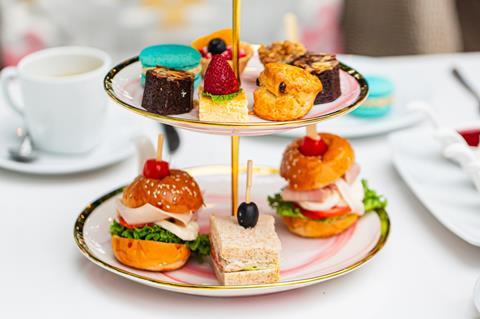
Mid-afternoon, mid-price delight
Afternoon tea might not be a top priority when costs are tight, but it has found itself a niche as a reasonably priced experience for many.
“The cost-of-living challenges have undoubtedly impacted people’s social lives, but afternoon tea can be a relatively cost-effective way of going out, so it seems to have retained its popularity,” says Marie-Emmanuelle Chessé, international development project manager at patisserie supplier Tipiak. “People want to treat themselves and also to celebrate an occasion but sometimes they are looking to do so in a way that won’t cost the earth.”
Away from the five-star hotels, there are many affordable options on the market hitting the £20-30 mark with cream teas coming in under that. Asda, for example, is serving up a scone, cream, jam, and a hot drink at its cafes for just £3 this Afternoon Tea Week.
Another cost-effective way for consumers to indulge is to order afternoon tea by post or DIY it with supplies from the supermarkets.
A key consumption driver for afternoon tea is the “emotional positive impact consumers are expecting”, according to Saison from Mademoiselle Desserts, meaning consumers are willing to invest in the experience. Among the needs and feelings they are seeking are ‘cosy’, ‘magical’, ‘making memories’, and ‘relaxation’.
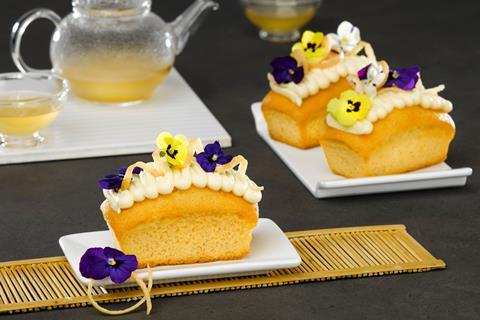
A flavour sensation
The beauty of afternoon tea is that it is a blank canvas for interesting flavours and formats but, in a world filled with potential, there are inevitable themes which tie into consumer interests leading to another divergence in the market.
“A growing number of Millennials and Gen Z-ers are embracing the afternoon tea trend – but are updating it to suit their specific tastes. Research shows they love the retro flavours and are reviving traditional favourites such as vol au vents and Scotch eggs,” says Rain at Henley Bridge. “At the same time, they’re injecting new life into this very British tradition with the introduction of global flavours such as miso, yuzu, and matcha, and products like mini samosas and hoisin duck bites are making their way on to afternoon tea tiers.”
The Compleat Food Group points to flavours and formats inspired by the Mediterranean making their way onto the stand, with some operators swapping out British ham in finger sandwiches for Italian or Spanish antipasti such as prosciutto crudo and chorizo or creating seasonal British Portuguese fusions like rhubarb or blueberry pastéis de nata.
France is also high among the regions serving up inspiration, and not just because of its patisserie offering which has long been a staple of afternoon tea.
“Even though it’s a quintessential British occasion, one of the key themes for this year is French patisserie products,” says Miriam Bernhart, director category Bread & Pastry Solutions at CSM Ingredients, highlighting the 2024 Summer Olympics taking place in the country as a key driver.
“Choux pastry can be piped in different shapes to create profiteroles, Saint Honor, Paris Brest and croquembouche. And other classic crowd pleasers including tarte tatin, mille feuille and souffle should also be an option,” Bernhart suggests.

Macarons are also increasing in popularity with research by patisserie supplier Tipiak revealing that they are the fourth most popular item that Brits would like to see as part of their afternoon tea served up in a foodservice setting. Scones with clotted cream, naturally, came in first place, followed by miniature Victoria sponge cakes, and ham sandwiches. Other options respondents are keen to see on the stand include eclairs, miniature quiches, chocolate-dipped strawberries, and fruit tartlets.
“Macarons are visually appealing and provide a splash of colour and look elegant when presented alongside canopies and sandwiches on tiered stands,” says Paul Saunders, managing director of Proper Cornish whose French sister company Mag’M produces the delicacies.
Notably, macarons can often be bought from suppliers frozen and simply thawed before adding to the display, making it easy for operators to add a pop of colour or an interesting flavour to the mix.
ADVERTISEMENT: HENLEY BRIDGE, YOUR TRUSTED BAKERY PARTNER
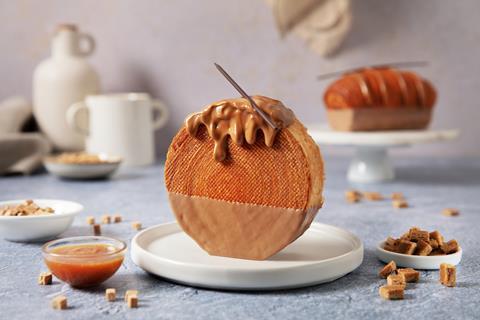
Henley Bridge sources and supplies a large range of the finest ambient bakery ingredients. Whether you’re a small artisan bakery or a large manufacturer we’ve got you covered.
Our selection of premium ingredients come from leading brands such as Belcolade, Borion, Callebaut, deZaan, Dobla, Irca, Pidy, Prova Gourmet, Rainbow Dust, Sosa and many more. Each product is carefully sourced to ensure the highest quality, bringing you the finest flavours and textures.
At Henley Bridge, we’re a true partner and nothing makes us happier than seeing your business thrive! Our dedicated team of experts are always on hand to help with any questions you may have, and our Development Chefs can assist with recipe and product innovation as well as technical product queries.
Join our community of passionate bakers and let Henley Bridge be your trusted partner in baking. Visit the Henley Bridge website to browse our range of bakery products.




























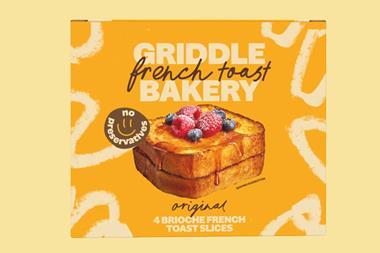


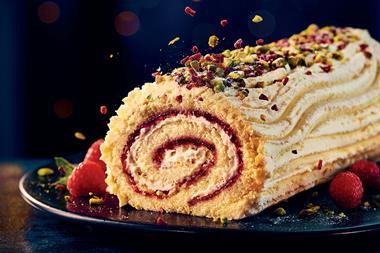


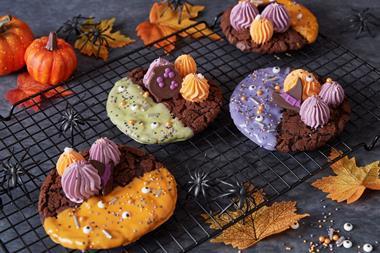

No comments yet